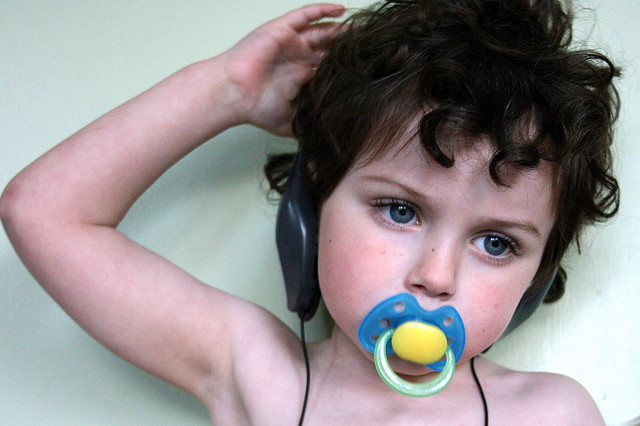Because I’m a mother and an orthodontist, other parents frequently ask me about pacifier use. Should I give my child a pacifier? When should I stop my child’s pacifier use? Do you have suggestions for weaning my child off the pacifier?
Known benefits of pacifier use include pain and anxiety relief, a calming effect, reduction of the risk of sudden infant death syndrome (SIDS), and shorter stays in hospitals for preterm infants. Disadvantages include possible interference with breastfeeding, increased risk of ear infections, and dental problems. For these reasons, the American Academy of Pediatrics recommends postponing pacifier use until breastfeeding habits are well established and little to no use of pacifiers after six months of age to reduce the risk of ear infections.
The effects of pacifier use on the growth and development of the teeth and jaws have been studied extensively. In 2006, an analysis of the existing research showed that pacifier use, if stopped by the age of two or three, does not significantly alter the teeth. The article found that pacifier use beyond age three  contributes to higher incidence of problems with jaw development and the bite – especially with open bite (the front teeth do not touch), narrow upper jaw, and crossbite (the back teeth not coming together properly). The harmful dental effects were more severe with more frequent and extended use.
contributes to higher incidence of problems with jaw development and the bite – especially with open bite (the front teeth do not touch), narrow upper jaw, and crossbite (the back teeth not coming together properly). The harmful dental effects were more severe with more frequent and extended use.
Parents also might ask, Should my baby use an orthodontic pacifier? I remember looking at the overwhelming selection of types of pacifiers when I was shopping for my first baby. As an orthodontist, I was very interested in the claims of orthodontic pacifiers. I have since concluded that you should use the type of pacifier that your child likes best. Studies have shown only minor differences in bite changes when comparing orthodontic and conventional pacifiers. The longevity and duration of pacifier use are the most important factors. I have seen many children between one and three years old with significant open bites due to constant pacifier use. The good news is that once the pacifier habit is stopped, it tends to normalize quickly.
But how do I stop pacifier use? The authors of Ready Set Parent, Elizabeth Vantre, PhD, and Samantha Dawson, PhD, recommend baby’s seven-month mark to stop pacifier use. Before this age, objects are out-of-sight, out-of-mind because object permanence is just starting to develop. An emotional attachment to the pacifier has not been developed and babies are beginning to learn other methods of self-soothing. Although this is logical, you must weigh the risks and benefits and choose the best time for your family. If you wait longer, there may be some different challenges to face, but parents face these challenges every day.
If you are trying to stop the pacifier with a toddler or an older child, a few suggestions include:
1. Cut back gradually. Reduce pacifier use to the onset of sleeping only, removing once asleep to reduce the harmful effects if possible.
2. Involve your child. Especially for an older child, involve him or her in choosing the method of stopping.
3. Set a date. Give your child plenty of preparation for the upcoming big day. Talk about the date frequently, especially at times they are not in active pursuit of the pacifier.
4. Keep it positive. Praise your child for not using the pacifier. Avoid making negative statements about how a pacifier is for babies, or how your child is not behaving like a big boy or big girl.
5. Eliminate the satisfaction of sucking. A friend of mine poked small holes in the pacifier, eliminating the enjoyment of sucking. It worked like a charm for both her children.




